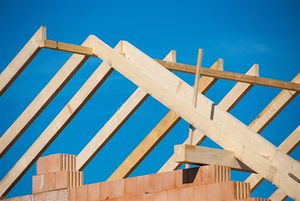Financial News
Economic Data Blackout: Government Shutdown Casts Shadow Over Market Clarity

Washington D.C., October 24, 2025 – As the U.S. federal government enters its 24th day of an ongoing shutdown, a critical "economic data blackout" is increasingly clouding the financial landscape. The prolonged funding lapse, which commenced on October 1st, has already led to significant delays in the release of vital economic indicators, most notably impacting the Consumer Price Index (CPI) and the crucial updates for Social Security's Cost of Living Adjustments (COLA). This disruption injects a substantial degree of uncertainty into financial markets, leaving investors and policymakers grappling for a clear picture of the nation's economic health.
The immediate implications are far-reaching. While some critical data, like the September CPI, was eventually released today after a delay, the prospect of future reports being entirely withheld, such as the upcoming October CPI, poses an unprecedented challenge. This lack of timely and comprehensive information makes informed decision-making exponentially more difficult for businesses, investors, and the Federal Reserve, potentially leading to misallocations of capital and increased market volatility as participants operate in the dark.
Unpacking the Data Delays: A Shutdown's Stranglehold on Transparency
The current government shutdown, now nearly a month old, has systematically hampered the operations of key federal agencies responsible for collecting, analyzing, and disseminating economic data. The Bureau of Labor Statistics (BLS), for instance, was forced to furlough employees, directly causing the delay of the September CPI report. While a temporary recall of staff allowed for the release of this critical inflation gauge today, showing a year-over-year increase of 3% – slightly cooler than anticipated – the White House has already signaled that the October CPI report is "likely" to be entirely suspended if the shutdown persists. This would mark a historic first for the report, which is a cornerstone of economic analysis.
Similarly, the announcement of the 2026 Social Security COLA, a vital adjustment for millions of beneficiaries, was also postponed from its initial October 15th schedule. Its determination hinges directly on the September CPI data. With the CPI now released, the Social Security Administration (SSA) announced today a 2.8% increase for the upcoming year, ensuring that payments will continue despite the broader government paralysis.
The timeline leading to this moment is a familiar one in Washington: a failure to pass appropriations bills by the fiscal year deadline of September 30th. This political impasse between Congress and the President has resulted in a funding gap, forcing non-essential government services to cease. Key players involved include Congressional leaders (e.g., House Speaker, Senate Majority Leader), the President, and the heads of various federal agencies like the BLS and SSA, who are tasked with navigating the operational challenges of a shutdown.
Despite the significant data disruptions, initial market reactions on October 24, 2025, have shown a surprising resilience. Major indices, including the S&P 500 (SPX), Dow Jones Industrial Average (DJIA), and Nasdaq Composite (IXIC), all reached new record highs. This apparent investor nonchalance seems to stem from the cooler-than-expected September CPI reading, which has amplified expectations for a Federal Reserve interest rate cut in the near future. Historical precedents suggest that government shutdowns often have minimal lasting impact on equity performance, with markets tending to focus more on underlying economic fundamentals, corporate earnings, and interest rate outlooks. However, the prolonged absence of fresh data could test this resilience.
Navigating Uncertainty: Winners, Losers, and the Corporate Conundrum
The ongoing economic data blackout, while not directly altering corporate fundamentals, significantly amplifies uncertainty, creating an uneven playing field for various public companies and sectors. Companies that thrive on predictable economic conditions and granular consumer insights may find themselves at a disadvantage, while others with robust balance sheets or less reliance on immediate data releases might weather the storm more effectively.
Potential Losers:
- Retail and Consumer Discretionary Companies: Businesses like Walmart (NYSE: WMT), Target (NYSE: TGT), and Amazon (NASDAQ: AMZN) heavily rely on detailed consumer spending, inflation, and employment data to forecast demand, manage inventory, and plan marketing strategies. The absence of timely updates on consumer sentiment, retail sales, and broader inflationary pressures makes these crucial operational decisions more challenging and prone to error.
- Financial Institutions: Banks such as JPMorgan Chase (NYSE: JPM) and Bank of America (NYSE: BAC), along with investment firms, depend on a constant stream of economic data to assess credit risk, model market movements, and advise clients. A lack of reliable government statistics forces them to rely on less comprehensive private sector data, potentially leading to less accurate risk assessments and investment strategies.
- Real Estate Sector: Companies like American Tower Corporation (NYSE: AMT) or Public Storage (NYSE: PSA), and the broader housing market, are sensitive to interest rates, inflation, and employment figures. Delays in housing starts, existing home sales, and construction spending data from agencies like the Census Bureau can obscure trends, impacting investment and development decisions.
- Small and Medium-Sized Businesses (SMBs): Often operating with tighter margins and less access to sophisticated private analytics, SMBs are particularly vulnerable. They rely on publicly available government data to gauge local economic health, consumer confidence, and labor market trends, making the data blackout a significant operational hurdle.
Potential Winners (or those less impacted):
- Large, Diversified Conglomerates: Companies with broad global operations and diverse revenue streams, such as Berkshire Hathaway (NYSE: BRK.A) or Johnson & Johnson (NYSE: JNJ), may be less susceptible to domestic data disruptions. Their extensive internal research capabilities and global exposure can help buffer against U.S.-specific data gaps.
- Companies with Strong Market Niches/Essential Services: Utilities like NextEra Energy (NYSE: NEE) or healthcare providers such as UnitedHealth Group (NYSE: UNH) often operate in regulated environments or provide essential services, making their demand less elastic to short-term economic data fluctuations.
- Technology Companies with Proprietary Data: Tech giants like Alphabet (NASDAQ: GOOGL) or Meta Platforms (NASDAQ: META), which collect vast amounts of user data, might leverage their internal insights to gain a competitive edge in understanding consumer behavior, filling some of the gaps left by government statistics.
- Defensive Stocks: In periods of heightened uncertainty, investors often flock to defensive sectors like consumer staples (e.g., Procter & Gamble (NYSE: PG)) or utilities, which tend to be more stable regardless of economic cycles or data availability.
The primary impact on these companies stems from the increased difficulty in forecasting and risk management. Without reliable government data, businesses face greater uncertainty in planning capital expenditures, hiring, pricing, and overall strategic direction. This can lead to a slowdown in investment and potentially more conservative business practices until clarity returns.
Wider Significance: A Blinder on the Economy's Dashboard
The ongoing government shutdown and its subsequent data blackout extend far beyond mere inconvenience; they represent a significant blinder on the economy's dashboard, with wide-ranging implications for broader industry trends, regulatory oversight, and the very mechanisms of economic policy. This event fits into a recurring, albeit still disruptive, pattern of political impasses affecting economic transparency.
One of the most critical ripple effects is on the Federal Reserve. The Fed relies heavily on official government statistics—from inflation and employment figures to manufacturing output and retail sales—to formulate its monetary policy, particularly regarding interest rates. With the October CPI report likely suspended and other data streams interrupted, the central bank is forced to operate with incomplete information. This could lead to delayed or misjudged policy decisions, potentially exacerbating economic fluctuations. The Fed may have to increasingly rely on alternative, private-sector indicators, which, while valuable, may not offer the same comprehensive or standardized view as official government releases.
For industries, the absence of data creates a vacuum of information. Companies in sectors such as manufacturing, construction, and retail typically use government reports to benchmark their performance, identify emerging trends, and make investment decisions. Without these benchmarks, strategic planning becomes speculative. For instance, a construction firm cannot accurately assess market demand for new housing if housing starts and permits data are unavailable. This can lead to a slowdown in capital expenditure and hiring across multiple sectors.
Regulatory and policy implications are also significant. While the shutdown itself is a policy failure, its impact on data collection hinders the ability of policymakers to craft effective responses. For example, without accurate inflation data, it's harder to gauge the effectiveness of fiscal policies aimed at stabilizing prices. Furthermore, the shutdown itself means that many regulatory agencies are operating with limited staff, potentially slowing down approvals, inspections, and enforcement actions across various industries.
Historically, government shutdowns have occurred periodically, but the duration and the specific impact on data release vary. While past shutdowns have caused temporary delays, the prospect of an entire monthly CPI report being withheld is particularly concerning. Comparisons to previous shutdowns, such as those in 2013 or 2018-2019, show that while markets often recover, the cumulative effect of data delays can erode confidence and introduce systemic risk, especially if the shutdown is prolonged and critical data remains elusive. The current situation highlights the fragility of an economy heavily reliant on government-produced statistics for its fundamental understanding and operational guidance.
The Path Forward: Navigating a Foggy Economic Horizon
The immediate future hinges precariously on the resolution of the government shutdown. In the short term, if the shutdown persists, the financial markets will continue to operate under a significant veil of uncertainty. Investors should brace for increased volatility as news cycles focus on political negotiations rather than economic fundamentals, and as the Federal Reserve grapples with incomplete data for its upcoming policy meetings. The delay or cancellation of further key economic reports, such as unemployment figures, producer price index (PPI), and retail sales, would further deepen the data void, making it exceedingly difficult to ascertain the true momentum of the U.S. economy.
For businesses, strategic pivots may become necessary. Companies might need to enhance their internal data collection and analysis capabilities, relying more on proprietary sales data, supply chain metrics, and private sector surveys to fill the gaps left by federal statistics. This could favor larger corporations with the resources to invest in such intelligence, potentially widening the information asymmetry between them and smaller enterprises. Market opportunities might emerge for alternative data providers and economic consulting firms that can offer insights in the absence of official government releases. Conversely, challenges will include difficulties in capital allocation, forecasting, and managing investor relations when core economic indicators are missing.
Looking long-term, even after a resolution, the episode could prompt a reevaluation of the resilience of government data infrastructure. There might be calls for legislative measures to ensure the continuity of essential economic data collection during future shutdowns, or for increased funding for agencies like the BLS to build more robust, shutdown-resistant operational protocols. The experience could also accelerate the trend of markets and policymakers looking beyond traditional government data to a broader array of real-time, private-sector indicators.
Potential scenarios and outcomes range from a swift resolution, leading to a quick rebound in data releases and market confidence, to a prolonged impasse that could significantly undermine economic growth and potentially trigger a more substantial market correction as uncertainty mounts. Investors should closely monitor developments in Washington, paying particular attention to any bipartisan efforts to fund the government, as well as statements from the Federal Reserve regarding its data reliance and policy outlook. The duration of the shutdown will be the ultimate determinant of its lasting economic impact.
Comprehensive Wrap-up: Uncertainty as the New Constant
The ongoing government shutdown, now in its fourth week, has thrust the U.S. economy into an unprecedented "economic data blackout," making uncertainty the new constant for financial markets and investors. The key takeaway from this event is the profound reliance of a modern economy on timely and accurate government statistics. The delays in critical reports like the CPI and the challenges in updating Social Security COLA underscore how deeply integrated these data streams are into the fabric of economic decision-making. While the September CPI was eventually released, offering a glimmer of clarity and reinforcing hopes for a Federal Reserve rate cut, the looming prospect of an entirely suspended October CPI report highlights the severe limitations imposed by the political impasse.
Moving forward, the market will likely remain highly sensitive to any news regarding the shutdown's resolution. The resilience observed in equity markets thus far, driven by hopes of monetary easing, may be tested if the data void persists and begins to obscure underlying economic weaknesses. The Federal Reserve's ability to make informed policy decisions is significantly hampered, raising concerns about potential missteps in managing inflation and growth.
For investors, vigilance is paramount. Beyond monitoring political developments in Washington, it will be crucial to track alternative economic indicators, corporate earnings reports (as companies may need to provide more qualitative guidance in the absence of official data), and any statements from the Fed regarding its assessment of the economy without a full data picture. The lasting impact of this shutdown could be a renewed appreciation for the often-taken-for-granted role of government data in maintaining market transparency and stability. This event serves as a stark reminder that political gridlock can have tangible, far-reaching economic consequences, making the path ahead foggy and fraught with potential challenges.
This content is intended for informational purposes only and is not financial advice
More News
View More




Recent Quotes
View More
Quotes delayed at least 20 minutes.
By accessing this page, you agree to the Privacy Policy and Terms Of Service.



